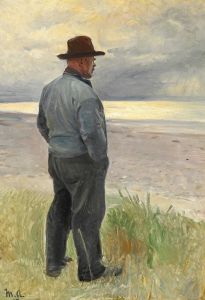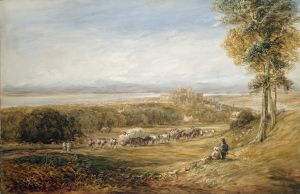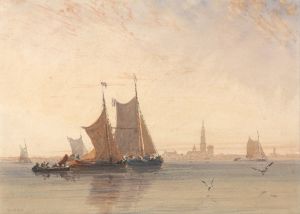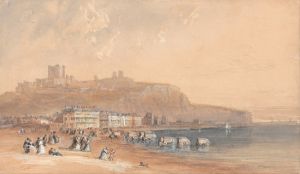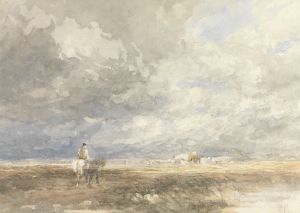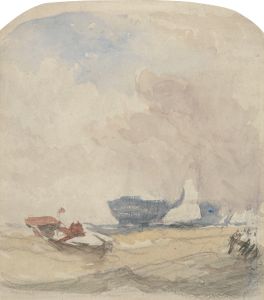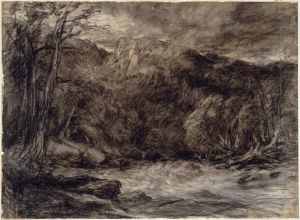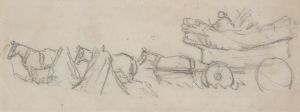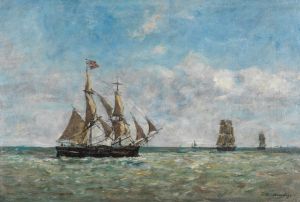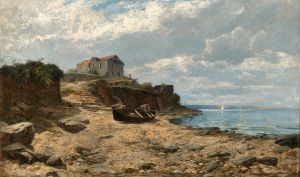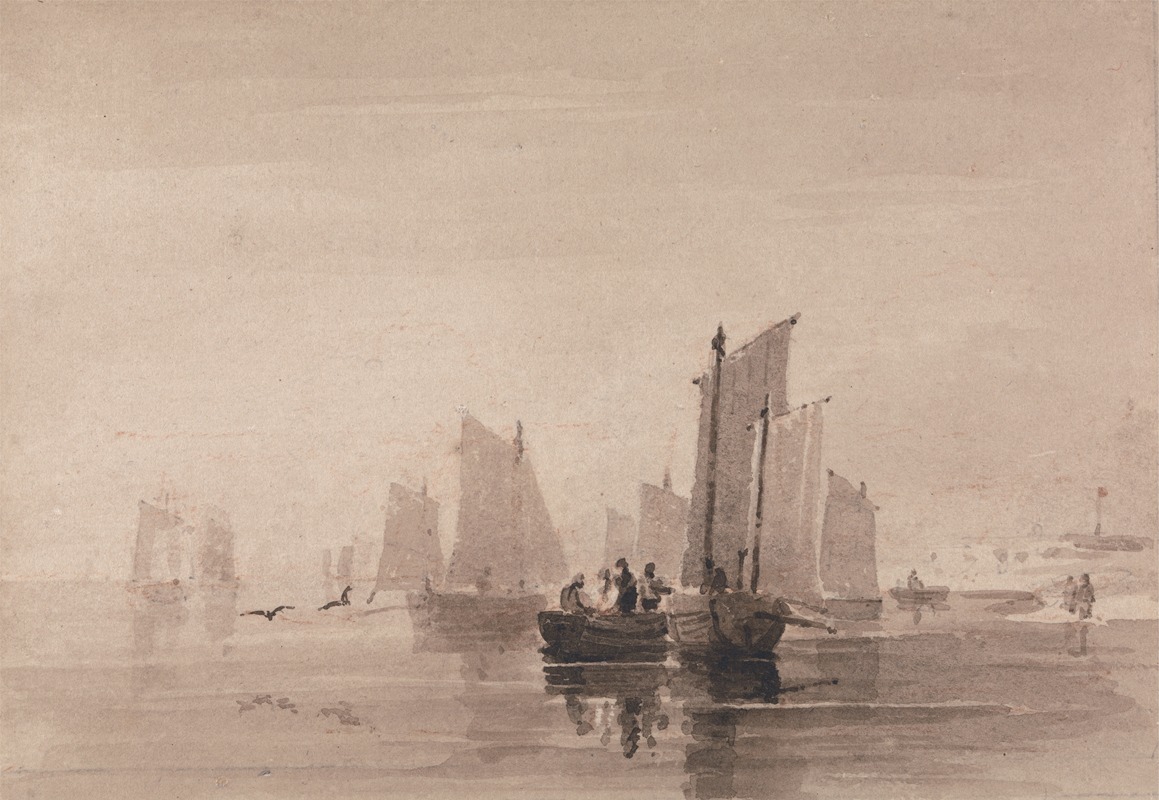
Fishing off Hastings
A hand-painted replica of David Cox’s masterpiece Fishing off Hastings, meticulously crafted by professional artists to capture the true essence of the original. Each piece is created with museum-quality canvas and rare mineral pigments, carefully painted by experienced artists with delicate brushstrokes and rich, layered colors to perfectly recreate the texture of the original artwork. Unlike machine-printed reproductions, this hand-painted version brings the painting to life, infused with the artist’s emotions and skill in every stroke. Whether for personal collection or home decoration, it instantly elevates the artistic atmosphere of any space.
"Fishing off Hastings" is a painting by the British artist David Cox, a prominent figure in the English landscape painting tradition. David Cox was born on April 29, 1783, in Birmingham, England, and became one of the leading figures in the development of English watercolor painting during the 19th century. He is often associated with the Birmingham School and is known for his atmospheric landscapes and innovative use of watercolor techniques.
The painting "Fishing off Hastings" depicts a coastal scene near the town of Hastings, located on the southeast coast of England. Hastings is historically significant as a fishing port and is famously known for the Battle of Hastings in 1066. The town's picturesque coastline and bustling fishing activities have long attracted artists seeking to capture the essence of maritime life.
In "Fishing off Hastings," Cox employs his characteristic loose brushwork and keen attention to atmospheric effects. The painting captures the dynamic interaction between the sea and the sky, a hallmark of Cox's work. His ability to convey the changing weather and light conditions adds a sense of realism and immediacy to the scene. The composition likely includes fishing boats, figures engaged in fishing activities, and the expansive sea, all rendered with Cox's adept handling of color and form.
David Cox's approach to painting was influenced by his early training and experiences. He initially worked as a scene painter for theaters in Birmingham and London, which honed his skills in creating dramatic and atmospheric effects. Cox later became a drawing master, which allowed him to travel extensively and paint various landscapes across Britain. His works often reflect his deep appreciation for the natural environment and his ability to capture its transient beauty.
Cox was a member of the Society of Painters in Water Colours (now the Royal Watercolour Society), where he exhibited regularly. His contributions to the medium of watercolor were significant, and he played a crucial role in elevating its status as a serious art form during the 19th century. Cox's works were well-received during his lifetime, and he enjoyed a successful career as an artist and teacher.
"Fishing off Hastings" exemplifies Cox's mastery of watercolor and his ability to depict the English landscape with both sensitivity and vigor. His paintings are characterized by their spontaneity and freshness, capturing the fleeting moments of nature with remarkable skill. Today, David Cox is remembered as one of the foremost English landscape painters of his time, and his works continue to be celebrated for their contribution to the tradition of British landscape art.
While specific details about the provenance or current location of "Fishing off Hastings" may not be readily available, Cox's paintings are held in numerous public and private collections, including major institutions such as the Tate Gallery and the Victoria and Albert Museum in London. His legacy endures through his influence on subsequent generations of artists and his enduring popularity among art enthusiasts.





